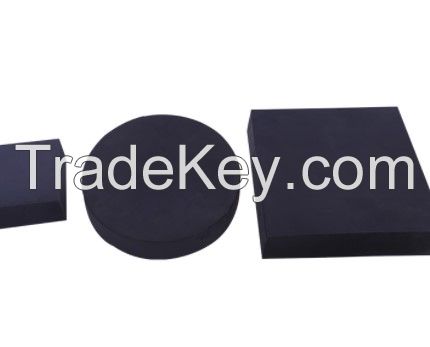
FOB Price
Obtener el precio más reciente0.84 ~ 4.2 / Piece
|Minimum Order
Place of Origin:
-
Price for Minimum Order:
Minimum Order Quantity:
1 Piece
Packaging Detail:
box
Delivery Time:
within 7 days
Supplying Ability:
100000 Piece per Month
Payment Type:
D/P, D/A, L/C, T/T, Western Union, Money Gram, PayPal
Persona de contacto Ms. zhang
NO22North Industrial Park, Hengshui, Hebei
Rubber damping blocks for Bridges
In bridge engineering, the two ends of the beam bridge span need to be equipped with supports. The main function of the support is to transfer all the load on the bridge span structure (including dead load and live load) reliably to the pier, and bear the horizontal displacement of the end of the bridge span structure due to the action of the load, such as corner deformation; The second is to adapt to changes in temperature and humidity caused by expansion and contraction. The bridge support has two kinds of fixed and movable support, the former is to fix the position of the bridge span structure on the pier, which can make the end of the bridge span structure rotate freely and can not move; The latter not only enables the end fulcrum to rotate freely but also requires it to move freely to withstand the expansion and displacement of the bridge span structure caused by temperature changes, concrete shrinkage and load factors.
Because the rubber bearing can adapt to the deformation of the superstructure of wide bridge, curved bridge and skew bridge in all directions, it is not only widely used in the small and medium span highway bridge, urban bridge and railway bridge, but also widely used in the long span bridge. At present, three types of ordinary plate, PTFE plate and box rubber bearing are widely used in bridge engineering.
The selection principle of the rubber main material of the bridge rubber bearing is that NR, CR, EPDM, IIR and chlorinated IIR are basically selected on the premise of meeting the requirements of engineering performance and combined with the requirements of environmental conditions. The manufacturing process of bridge rubber bearing is multi-purpose molding. The production process is rubber after plasticizing and compound according to the formula to make compound, parking, back refining and calendering, cut into a certain specification of semi-finished film. The semi-finished product is vulcanized under pressure on the plate vulcanizing machine. The vulcanization process should pay attention to avoid the uneven thickness of the finished product and the movement of the steel plate. In the bridge rubber bearing, the lead rubber bearing is made by filling lead vertically in the middle of the ordinary damping rubber bearing. First, the purpose of lead irrigation is to improve the energy absorption effect of the support and ensure that the support has moderate damping; The second is to increase the early stiffness of the support, which is beneficial to control the wind response and resist the micro-vibration of the foundation. As the leading product, the isolation system composed of this rubber bearing has been widely used in large and medium-sized Bridges abroad, and has achieved good results.
The durability and fire resistance of the rubber bearing have been proved by many tests and examples to meet the requirements of the design life of the building. In addition, the isolation rubber bearing is also widely used in the isolation of buildings along roads, railways, subways and water structures.